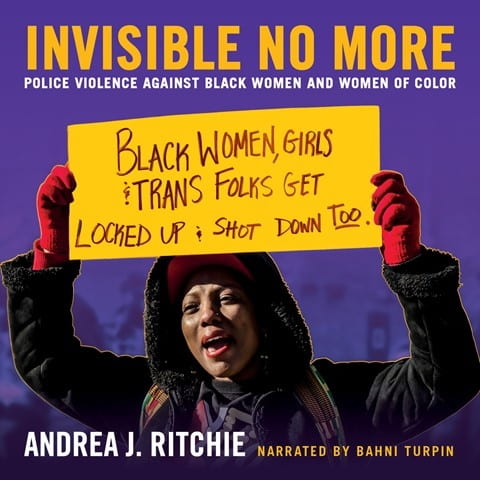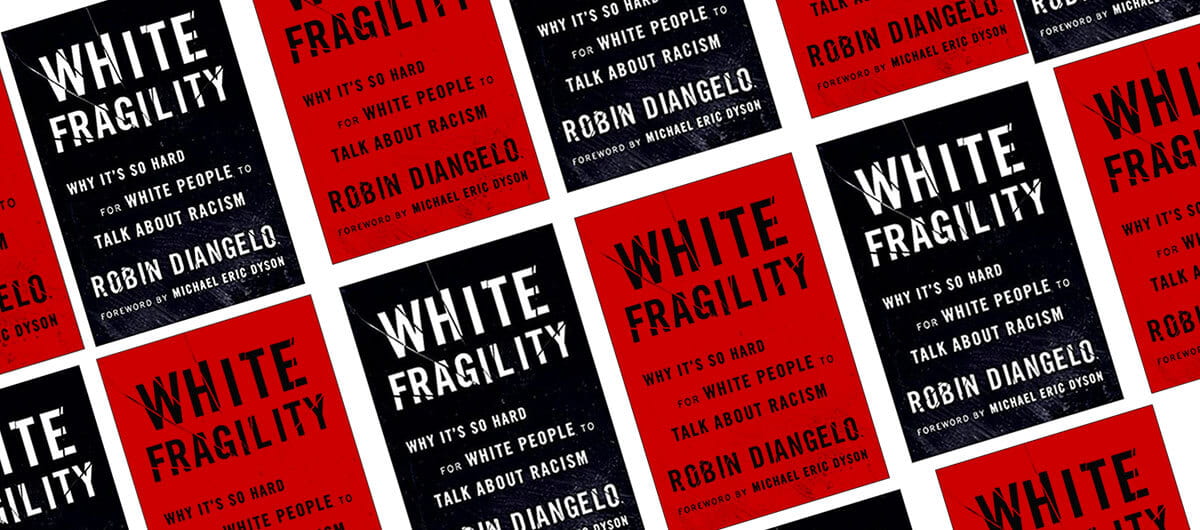This book review was originally published in the Vulcan Historical Review, Fall 2018.

Andrea J. Ritchie is a lawyer and activist. She writes Invisible No More “as an act of love, of mourning, of honoring, of commemoration, of liberation, as a contribution to our shared struggles, wrestling with the meanings of Blackness, privilege, solidarity, and co-struggling; of ‘survivor’ and ‘ally’” (5) for and from the community of which she is a member (11). The goal of Invisible No More is to establish recognition of the police brutality against women of color (us). She accomplishes this in several ways throughout this book. First, this book brings personal stories to the center and into focus by identifying the differences and commonalities among women of color. Second, it explores the various forms of police violence, as well as how race, gender, sexual orientation and ability to influence the action/expression of police violence. Third, it identifies patterns and paradigms within the controlling narratives which are rooted in colonialism, slavery, and structural violence. Lastly, it invites a discourse on aspects of the mass incarceration system previously invisible, including profiling and police brutality against women of color.
The book’s layout consists of eight chapters (2-9) that highlight various areas and interactions of police with women of color. Each chapter concludes with a resistance subsection wherein details of individual and collective resistance to the policing of gender takes a variety of forms at the local and national level (139). Ritchie bookends chapters 2-9 with chapter one, “Enduring Legacies” and chapter ten, “Resistance.” Within the pages, Ritchie questions the societal demand upon police for prevention of and response to violence while also challenging their contribution to the violence. Additionally, she ponders, “what would it mean to build structures and strategies beyond police that will produce genuine safety for women of color, especially in hostile terrain.” (18) She suggests that placing Black women and women of color at the center of the conversation shifts demands, analysis, and approaches (17).
Chapter 1 outlines the historical record of violence against women of color, inclusive of Indigenous women, by highlighting a portion of the controlling narratives. Colonization brought about the desecration and extermination of Indigenous identity and humanity. Sexual violence was a primary weapon. Ritchie introduces the concept of “the myth of absence” as a collective reductionist method. Employing the myth of absence allows for the normalization of invisibility under the guise of colonial establishment. This myth applies to both land and sea.
Masters of the enslaved utilized motherhood as an instrument of punishment under the oppressiveness of slavery. There was no shadow of law, so Black women became property, and with this new “label” came the disassociation their gendered status. This disassociation with womanhood dislodged the perception of femininity as well. “This system of constructed categorizations of Black women’s behavior and possibilities for existence persist to this present day… such narratives [mammy, Jezebel, subservience, tolerant, pain intolerant] inform police perceptions of what conduct is appropriate and permissible toward Black women.” (35)
The government positions immigrant women as a “control apparatus… for the regulation of sexual norms, identities and behaviors.” (37) This control functions as both a mode of discipline and a measurement of their suitability to contribute to the overall national identity (38). Stereotyped and prejudged, immigrants and queer/trans women extend beyond the normalized border standard of hetero, cis, white, etc. In other words, non-white women—whether with attitude, dress, and sexuality, size and skin tone—represent a deviation from the norm. To correct the “deviation,” a pattern of law enforcement arises to “structure and reinforce…perceptions” (41).
Chapters 2-9 describes the patterns of law enforcement applied to women of color. A summarization to the roots of the enforcement patterns comes from Arizona State University professor, Ersula Ore: “This entire thing has been about your lack of respect for me.” (58) The chapters expose how police, with impunity, make gender (for cis and/or queer/trans women) a sociopolitical site (139) of human rights abuses and violations as they view the bodies of girls and women of color as threats in public and private spaces (145). The gendered degradation and disposability of Black women (51-2) and the deep devaluation of motherhood and life for women of color (170) are merely two identifiable threads in the fabric of sexual violence within the police system (105).
Chapters 3 and 4 confirm that police brutality against women of color, includes minors and persons with disabilities. There is no escape from the profane overreaction of those “who make the rules up as they go along and often enforce them in deeply racialized ways” (75). In chapter 3, Ritchie builds upon the works of Monique W. Morris and bell hooks. They agree that schools—sites for the profound regulation and punishment of Black femininity– institute zero-tolerance policies and exact an “oppositional gaze” applicable disproportionally to girls of color, who are disrupting the peace or engaging in disorderly conduct by “having the audacity to demand to be treated with dignity” (73-8). Morris introduces age compression as a weapon in the arsenal that schools and law enforcement use against girls of color. Age compression is the inability to see children of color as children, because of this, they are handled and treated like adults of color (78). In chapter 4, with each incident involving police and women with a disability or mental health disorder, the women are either injured or killed. Thus, in both instances, the failure to respond appropriately due to the misapplication of stereotypes escalates but does not resolve situations.
Chapter 10 provides an extended culmination of the resistance subsections introduced in chapters 2-9. This chapter seeks to outline critical ways community activists and organizers, alongside survivors and the families of the victims, are turning violations into victories by piercing the bubble of silence. Ritchie repeats the underlying question of “what would freedom from fear look like for girls and women of color” while reminding the reader of the need to continually speak truth to power. Resistance, like violence, exists within the sociopolitical site of the body (139). Resistance draws those subjected to the margins by anti-police violence and feminist movements, back in and towards the center with the understanding that police are necessary for social order (205-7). However, the perpetuation of violence and the invisibility of that occurs during and after, can no longer remain in the shadows (206). Resistance reinstitutes the tradition of truth-telling through the reclaiming of bodies and humanity.
Two key strengths of this book are the inclusion of Ritchie’s personal experience and investment, and her purposeful build upon the works of Angela Y. Davis, Danielle McGuire, Beth Richie, Monique Morris, bell hooks, etc. By incorporating the works of other female activists/scholars who posit and bring a different angle to this issue, this book makes a significant contribution to recovering the missing female narrative within the mass incarceration canon and the US gender relations discourse. This is a huge plus for this book as “women of color” includes every non-white category and encompasses the fluidity of the gender/sexuality spectrum. Ritchie does not shy away from her critique of the embedded racial and gender bias within the American social system. Her frankness adds a crucial element to discussions on interracial relations and intra-racial relations.
Invisible No More: Police Violence Against Black Women and Women of Color is an off the beaten path collection of domestic violence and terror stories against humans being of color. It is difficult to read which, frankly, deserves a trigger warning. By reading this book, one begins to understand both the complexity and the root of Kaepernick’s protest, the demands of justice for women like Sandra Bland, Chikesia Clemons, and Deborah Danner, and the mindfulness of young girls like Naomi Wadler. It is a stark reminder that there is a notably, significant difference in the treatment of whites and non-whites by law enforcement, and if you are not outraged, you are not paying attention.


